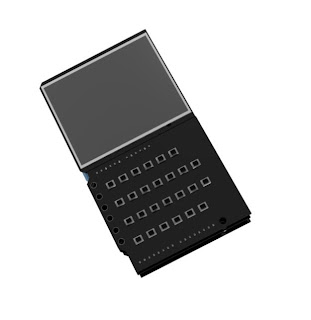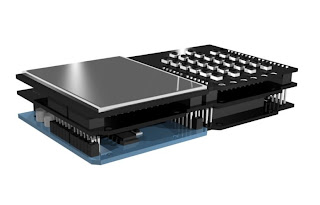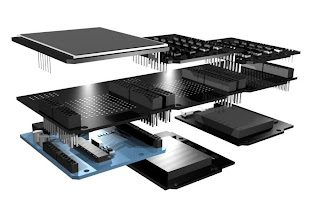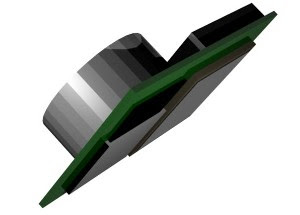"OSHB Fund 1" by the numbers
- The OSHB Fund 1 funded 100 Illuminatos.
- It took 3.5 weeks for the entire experiment to start and end (that was fast).
- 20 people bought Illuminato's from other people who funded them, which amounted to an even 20% "peer-to-peer" distributed capital percentage. Thanks Priya for that term...
- 48 other people bought Illuminato's that were funded by the OSHB (there are 2 left, which means the bank successfully funded and returned on its investment (the momentum principle held for the Illuminato woo hoo!).
- 8 people did the Buy-1-Build-2, got an Illuminato for cost, and $4.50 for shipping, which pretty much means free ground shipping anywhere in the U.S. Anyone who bought this will get a little box with an Illuminato in it, and a check for $64.48 give or take (depending on the shipping amount). The Buy-1-Build-2 option costs $94.47, so subtracting $64.48 equals $29.99, which is the cost of the Illuminato with no markup.
- 11 people did the Buy-1-Build-1 (it's hard to see in the current graphic, but that's because they went over the middle queue amount). Anyone who bought this will get a box with an Illuminato, and a check for $34.49 give or take. The Buy-1-Build-1 option cost $64.48, so subtracting $34.49 equals $29.99, which is the cost with no markup.
- 90 Illuminatos were sold with a 15% markup, which is WAAAAY less than the current average for electronics, which is something like 40-70%.
- 6 Illuminatos were sold with a 30% markup, which is actualy still less than the current average for electronics.
- 2 Illuminatos sold with a 45% markup, and that's only because they're the last ones at the end of the queue, but it's funny because actually, that's STILL less than the markup on most electronics.
- For matching the other half of the inventory round, the bank made a return of about $234 dollars in margin off the initial $1,380 it invested, for a return of about 16.95%. It's higher than 15% because of the few 30% markups at the tail end of the queue.
- The bank's return on investment of 16.95% for the Illuminato "OSHB Fund 1" happened within 3.5 weeks.
The Accountable Agency Ratio (AAR)
 Of the 34 ButtonShields currently bought/funded, 13 were bought right out vs. 21 funded, which means an "accountable agency ratio" of 38%. The "accountable agency ratio" is a term that Justin and I thought up after reading some econ textbooks we borrowed from friends. It probably deserves it's own blog post, but the gist is that there's this thing called the "agency problem" which is what economists like to blame lots of problems on - like greed and bubbles and mismanagement and lack of CEO ethics and corruption. I think it basically comes down to this: the guy running the company is often not the guy who's money is at stake, so he's an agent, and he does all kinds of stuff for his own benefit, not for the benefit of the investor.
Of the 34 ButtonShields currently bought/funded, 13 were bought right out vs. 21 funded, which means an "accountable agency ratio" of 38%. The "accountable agency ratio" is a term that Justin and I thought up after reading some econ textbooks we borrowed from friends. It probably deserves it's own blog post, but the gist is that there's this thing called the "agency problem" which is what economists like to blame lots of problems on - like greed and bubbles and mismanagement and lack of CEO ethics and corruption. I think it basically comes down to this: the guy running the company is often not the guy who's money is at stake, so he's an agent, and he does all kinds of stuff for his own benefit, not for the benefit of the investor.In the real world, the accountable agency ratio is something like 0.01% for employees (like me in my day job), 1-5% for overpaid executives (who get lots of options), 5-30% for each entrepreneur in a startup (based on friends of mine), and 10-40% for investors (like venture capital, but this is an estimate). So Justin and I don't want to this ratio to go below 33%.
Why? I don't know, it just feels right. That's like a 2:1 leverage ratio, instead of the 9:1 leverage ratio of the US central bank lending system, and 20:1 leverage ratio of mortgage lending all the failed banks used.
"OSHB Fund 2" by the numbers




- 34 ButtonShields have been bought or funded.
- 23 EqualizerShields have been bought or funded
- Of the 23 EqualizerShields, 12 are bought outright, vs. 11 funded, for an "accountable agency ratio" (AAR) of 52%!
- At the time that the Illuminato round 2 got funded, the AAR ratio was about 20/50, or 40%. So I suppose that technically means the EqualizerShield is getting less "speculation" and more "I just want one"-tion. :-)
- 16 DoubleWide X's have been bought or built, with an AAR ratio of 50%.
- 4 TripleWide's have been bought and 1 built. Hmmmm... The AAR ratio is 80%.
What happened to the Fund-5 option?
Now that Justin and I have the AAR (accountable agency ratio) defined, I didn't think it made sense to just have someone come in and Fund-5 at any given time off the bat, because that would run the risk of inappropriately or arbitrarily elevating the perceived "demand" for something that's getting built. Since the initial demand is the thing that's being used to lower the risk for the OSHB because of the "momentum principle," screwing with it can lead to inappropriate "demand bubbles." ... just like credit default swaps (at least from what I can understand of them), that would mean the bank was making a bet on a momentum principle which was artificially inflated. Since bubbles are a bad thing, Justin and I are trying to avoid them.

The Fund-5 option addresses the AAR in 2 ways. First, it's a "Build-2" in the first half of the inventory queue, so this goes towards offsetting initial demand's AAR. Second, it's a "Bank-3", which means that it's funding 3 after the half-way fulcrum point. That means it's partly replacing the role of the bank. This makes sense because in exchange for optimizing the AAR down to 33% and an unattached 15% ROI, the Fund-5 option has to wait until all the other Build's in the first half of the queue are built before these last 3 get refunded (like the bank does). And, it's assuming and reducing part of the speculation over the bank's bet on the momentum principle.
Now that there's an established Buy/Build AAR ratio for the ButtonShield, EqualizerShield, and DoubleWide X, Justin put up on the store a couple of Fund-5 options for those...
So there are 3 Fund-5 options for the ButtonShield, because if all 3 of them sold, that would make the AAR equal to 33%. Anyone who buys these would get a 15% ROI in whatever time period they sold. Or at any time, the Fund-5 can be cashed out by getting some of the inventory it funded, at cost of course.
There are also now 6 Fund-5 options for the EqualizerShield, because if they all sold, that would make the AAR equal to 34%.
There are 4 Fund-5 options for the DoubleWide X, for a max AAR of 33%.
And there are 3 Fund-5 options for the TripleWide X, for a max AAR of 36%.
Questions for April
After the last (and first) OSEC meeting in NYC, Justin and I met Andrew, and decided to start the bank and funding in the first place, which led to all of the mess we're in now :) There's still a lot to figure out, so here are a couple of topics that I think we'll probably talk about at the next upcoming OSEC meeting (either April 10, 11, 17, or 18).
There's a "terminal run" problem that I think I want to figure out - thanks to Mike for thinking of this. Another way to say this is, what happens when another round gets funded, and built, but half-way through no one else wants one? What happens to the left over stock? When should the bank decide when to start another queue for the same product?
There's an "incremental innovation" issue that Justin is thinking about based on his emailing. That's a couple of big words for an otherwise simple question: how do I incorporate small tweaks into the hardware that someone submits or asks for? In between queuing rounds?
There's an "international logistics" problem that a bunch of people have mentioned. Because international shipping is expensive, it might make sense to either pool or parallel build, or something like that around the world at the same time in order to reduce the cost of shipping to Europe from the US or vice versa. (Thanks Eric and Joerg) This is another funny difference between Open Source Software and Hardware. Sending OSS to someone around the world is free, or fractions of a penny at most, but hardware can be between $40-120.
There's a list of other hardware projects I've gotten over email from people all over the world who want to be included in the next round for the bank. I think the OSEC meeting we'll have to figure out a formal process of voting on which ones move up into the queue.
There are lots of analyses I've started to build that I want to include on the website... I'd like to get some help on them, or some opinions.
There's a wiki that Justin is starting that will need lots of work from him and me over the next couple of weeks.
Ok... back to coding my next project...!
























